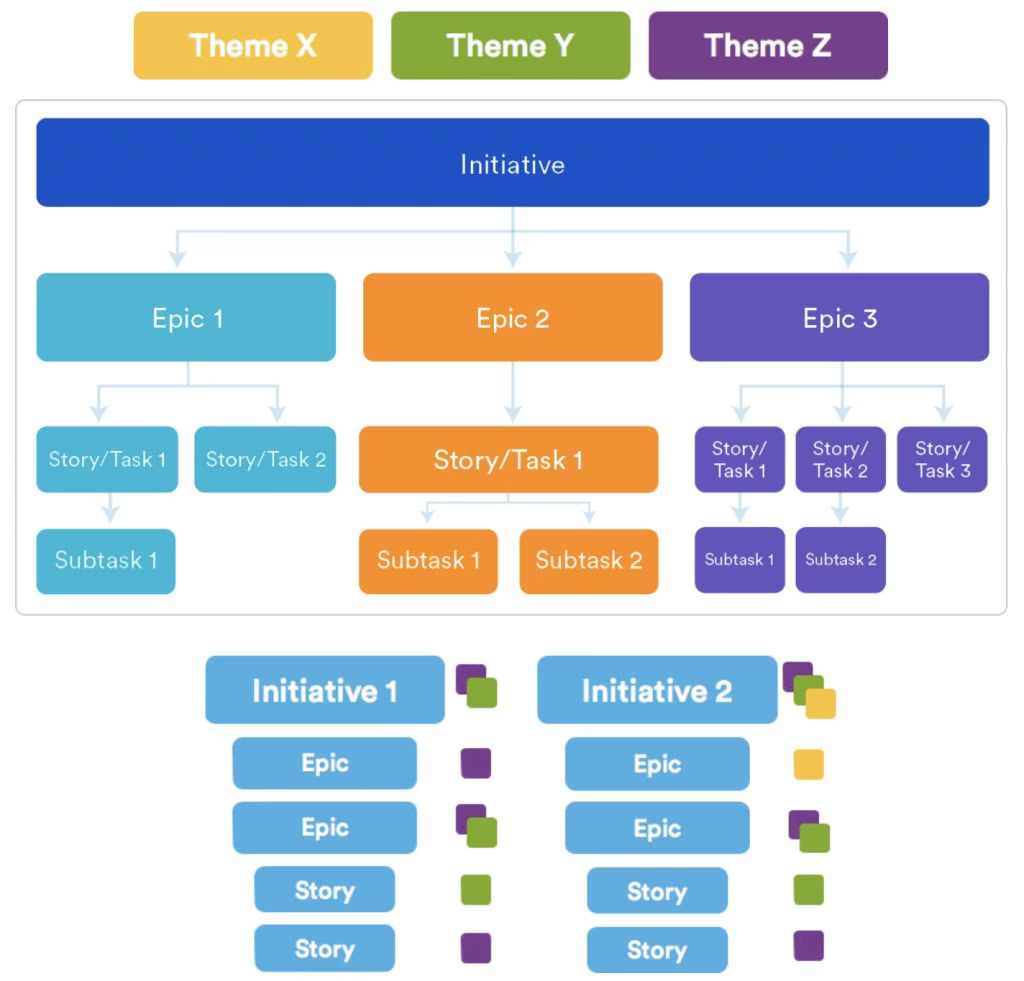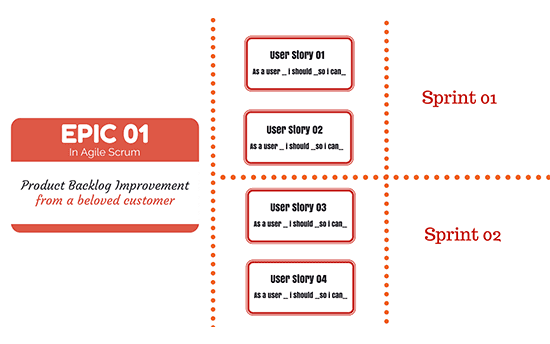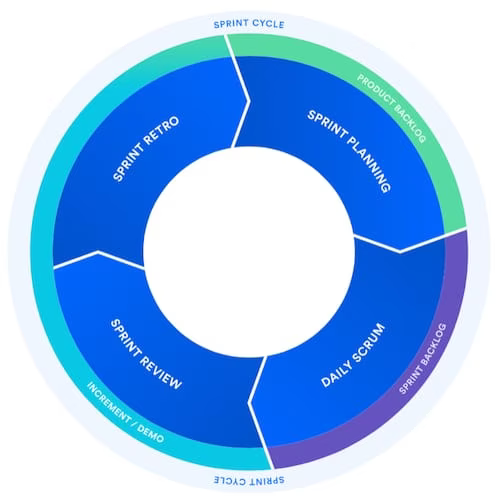An Agile Primer

I went a long time without understanding the basics of Agile, so here’s a quick primer for myself that I hope is useful for others as well.
What is Agile?
Agile is the concept and Scrum is the methodology.
Atlassian has a great definition.
Agile is an iterative approach to project management and software development that helps teams deliver value to their customers faster and with fewer headaches. Instead of betting everything on a "big bang" launch, an agile team delivers work in small, but consumable, increments. Requirements, plans, and results are evaluated continuously so teams have a natural mechanism for responding to change quickly.
Atlassian Agile Coach
Atlassian Agile CoachTL;DR: Agile is the concept of developing software in short bursts rather than massive releases so that teams can adjust to change.
The biggest confusion is mixing Agile the philosophy with Scrum the methodology.
What are Epics?
An agile epic is a body of work that can be broken down into specific tasks (called user stories) based on the needs/requests of customers or end-users.
Atlassian Agile Coach
Atlassian Agile CoachEpics should be named so that it’s extremely clear what you’re getting when it launches.
Epics are often features or other major pieces of functionality that must be broken down into multiple tasks. If the project were a real estate website, an epic might be adding a 3D touring feature. Or if the project were a SaaS HR application, an epic might be a timesheet function.
TL;DR: Epics are bodies of work that correspond to a significant feature or event.
What are User Stories?

A breakdown of Epics, Stories, and Sprints
A user story is an informal, general explanation of a software feature written from the perspective of the end-user.
Atlassian Agile Coach
Atlassian Agile CoachThey’re features, but captured as narratives.
User stories are not just lists of features; they’re descriptions of a feature that describe what the end-user wants to get out of that feature. They’re best captured as a narrative sentence, like:
As a [persona], I [want to], [so that].
User story examples
As Max, I want to invite my friends, so we can enjoy this service together.
As Sascha, I want to organize my work, so I can feel more in control.
As a manager, I want to be able to understand my colleagues’ progress, so I can better report our successes and failures.
TL;DR: Stories are features captured as narrative sentences from the perspective of a particular end-user.
What are Initiatives?

Initiatives unify epics through goals
Initiatives are collections of epics that drive toward a common goal.
Initiatives often cross multiple teams.
Initiatives are collections of epics captured as a goal, and should be named accordingly. For example, "Bounce Rate Reduction" could be an initiative because, 1) it will likely include multiple epics, and 2) its purpose is clear.
TL;DR: Initiatives are collections of epics captured as a goal.
What are Themes?
Themes are strategic labels that can be applied to initiatives, epics, or stories.
Themes are tags that can be applied anywhere, not parents of Initiatives.
You can think of themes as tags since you can attach them to any level. A theme might be something like, "Safety First", and that label/tag can then be applied to an Initiative called, "Encryption Everywhere", and an epic called, "TLS 3.1 Upgrade".
TL;DR: Themes are strategic tags.
What is Scrum?
Scrum is a framework that helps teams work together by encouraging teams to learn through experiences, self-organize while working on a problem, and reflect on their wins and losses to continuously improve.
Atlassian Agile Coach
Atlassian Agile CoachScrum can be used for any kind of teamwork.
TL;DR: Scrum is a cooperation framework.
What are Sprints?

The process of creating and managing sprints
A sprint is a short, time-boxed period when a scrum team works to complete a set amount of work.
Atlassian Agile Coach
Atlassian Agile CoachAnd another from Megan Cook.
With Scrum, a product is built in a series of iterations called sprints that break down big, complex projects into bite-sized pieces.
Megan Cook, Group Product Manager, Atlassian
Megan Cook, Group Product Manager, AtlassianAgile is philosophy, Scrum is methodology, Sprints are timeboxes.
Sprints are short periods of time where a certain amount of work is to be done. Sprints contain stories, which of course are part of Epics, but some epics will cross into multiple Sprints.
TL;DR: Sprints are set periods of time where a defined number of stories are worked on.
What is Kanban?
Trello uses Kanban, for example.
Kanban is a popular framework used to implement agile software development. It requires real-time communication of capacity and full transparency of work.
Atlassion Agile Coach
Atlassion Agile CoachWith Kanban, items are represented visually on a whiteboard, allowing team members to see the state of every piece of work in realtime. Kanban is both the board and the approach to managing work in a visual way, which helps limit work-in-progress and maximize a team’s efficiency.
TL;DR: Kanban is a visual way to manage work that’s organized via Agile/Scrum.
Summary
Agile is the philosophy of doing work in short iterations to adjust to change.
Scrum is the methodology for doing work in an Agile way.
Themes are strategic tags you can apply to anything within Scrum.
Initiatives are strategic containers for Epics/features.
Epics are significant features that need be broken down into smaller pieces.
Stories are discrete features captured as narratives from the perspective of the end-user.
Kanban is a visual way to manage Agile work.